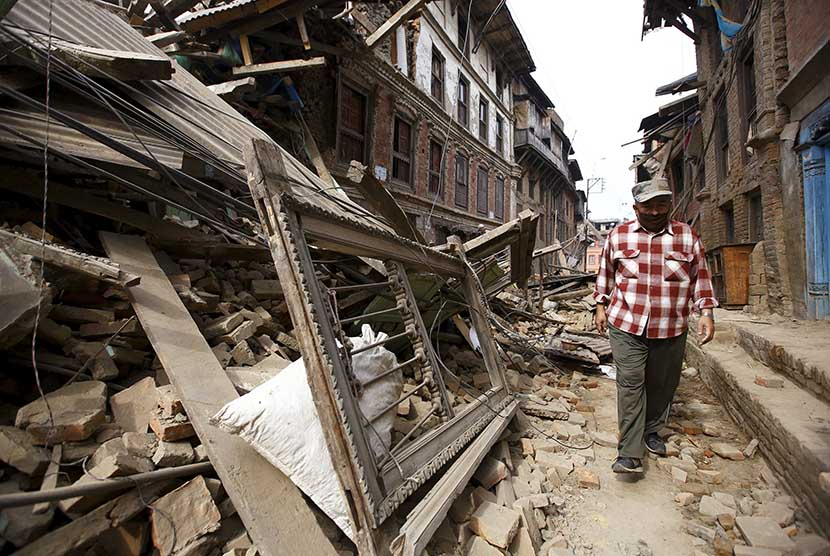REPUBLIKA.CO.ID, DHADING -- Barely any sign of anorganised relief effort was visible outside Nepal's capital on Sunday, as aid agencies struggled to fly and truck relief supplies to a country stricken by its worst earthquake in eight decades.
In Dhading district 80 km (50 miles) outside Kathmandu, people camped in the open, the hospital was overflowing, the power was off and shops were closed. Rocks were strewn across the lightly-travelled single road running west from the capital.
"Many people have lost their homes. Many people have died," said English teacher Chandra Lama, whose home village lies two hours' drive further west. The crops in his village ruined, Lama was hunting for rice and pulses to feed his family.
"We are waiting to see what the government will do."
More than 1,100 people - or half of the total confirmed dead in Nepal - were in the Kathmandu Valley, a crossroads of the ancient civilisations of Asia and economic hub of the Himalayan nation of 28 million.
Indian military helicopters airlifted some injured to local hospitals but their operations were hampered by bad weather.
With thousands sleeping in the open and heavy rain forecast, fears mounted of a humanitarian disaster.
Charity CARE International said that the death toll could run into the thousands, with hundreds of thousands homeless.
"Almost everyone has slept outside and they are creating temporary shelters with what they have," said CARE's emergency response coordinator in Kathmandu, Santosh Sharma. CARE said shelter and washing facilities were a priority, as well as food.
"There is no electricity, and soon there will be a scarcity of water." Aid agencies held a first meeting with the Nepali government on Sunday to coordinate the relief effort.
British charity Save the Children said hospitals in the Kathmandu Valley were overcrowded, running out of room to store dead bodies and short on emergency supplies.


